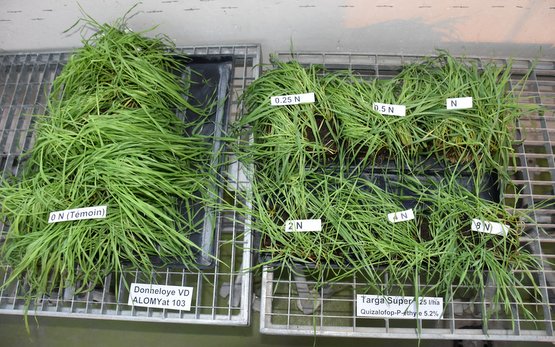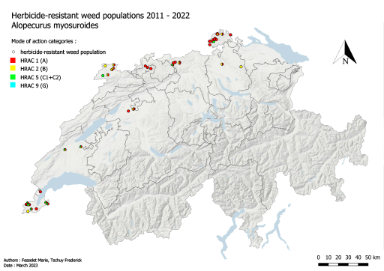In blackgrass populations, three herbicide modes of action are affected by resistances according to observations made since 2011. Moreover, several cases of double or triple resistance have been confirmed. Along with silky bentgrass, blackgrass is one of the species with the highest number of cases of resistance identified in Switzerland. All cereal-growing regions can be affected by the presence of blackgrass, particularly in heavy soils.
In blackgrass, single-resistance cases have been confirmed primarily for the ACCase inhibitors (HRAC 1), but also for ALS inhibitors (HRAC 2) and photosystem II inhibitors (HRAC5). The first confirmed case of resistance to ACCase inhibitors (HRAC1) dates from 2011 in the Canton of Schaffhausen. In 2012, in the Cantons of Geneva and Zurich, the first cases of resistance to ALS inhibitors (HRAC 2) were identified. Finally, the first confirmed cases of resistance to photosystem II inhibitors (HRAC 5) date from 2015 and stemmed from the Cantons of Vaud, Geneva and Schaffhausen.
Two types of double resistance have been observed since 2011: double resistances to ACCase- (HRAC 1) and ALS inhibitors (HRAC 2), as well as to ACCase- (HRAC1) and photosystem II inhibitors (HRAC 5).
Several cases of triple resistance to ACCase inhibitors (HRAC 1), ALS inhibitors (HRAC 2) and photosystem II inhibitors (HRAC 5) have also been confirmed.








